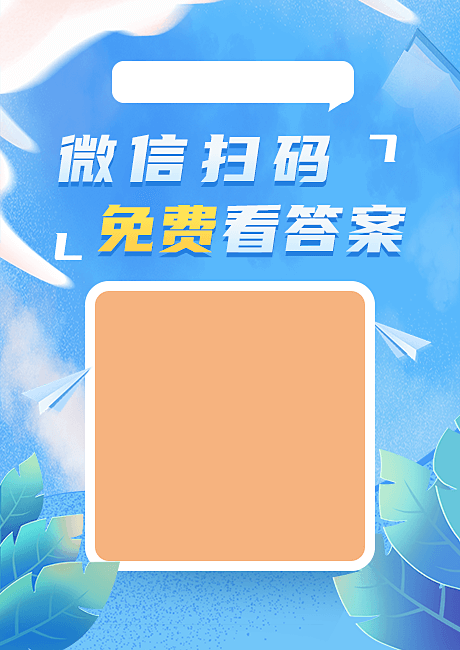Aristotle, the Greek philosopher, summed up the fo...
Aristotle, the Greek philosopher, summed up the four brief qualities of money some 2 000 years ago. It must be lasting and easy to recognize, to divide, and to carry about. When we think of money today, we picture it either as round, flat piece of metal which we call coins, or as printed paper notes. But there are still parts of the world today where coins and notes are of no use. They will buy nothing, and a traveler might starve if he had none of the particular local "money" to exchange for food. Among isolated peoples, who are not often reached by traders from outside, commerce usually means barter. There is direct exchange of goods. Perhaps it is fish for vegetables, or meat for grain. For this kind of simple trading money is not needed, but there is often something that everyone wants and everybody can use, such as salt to flavor food, shells for ornament, or iron and copper to make tools and vessels. These things—salt, shells or metals—are still used as money in out-of-the-way parts of the world today. Salt may seem rather a strange substance to use as money, but in countries where the food of the people is mainly vegetable, it is often an absolute necessity. Cakes of salt, stamped to show their value, were used as money in Tibet until recent times, and cakes of salt will still buy goods in Borneo and parts of Africa. Sea shells have been used as money at some time or another over the greater part of the Old World. Metal, valued by weight, preceded coins in many parts of the world. Nowadays, coins and notes have replaced nearly all of the picturesque (獨(dú)特的) form. of money, and although in one or two of the remote countries people still store it for future use on ceremonial occasions such as weddings and funerals, examples of primitive money will soon be found in museums.
The following are qualities of money summed up by Aristotle EXCEPT______.
A.distinct
B.divisible
C.portable
D.precious
 搜題
搜題
第1題
The following are qualities of money summed up by Aristotle EXCEPT______.
A.distinct
B.divisible
C.portable
D.precious
第2題
Salt may seem rather a strange substance to use as money, but in countries where the food of the people is mainly vegetable, it is often an absolute necessity. Cakes of salt, stamped to show their value, were used as money in Tibet until recent times, and cakes of salt will still be used to buy goods in Borneo and parts of Africa.
(37)
A.It should be made of metal.
B.It should be durable, distinct, divisible and portable.
C.It had been 2,000 years old.
D.It should be made of high-quality materials.
第3題
A.The trend towards e-mail marketing must be stopped.
B.E-mail marketing has changed a lot since it first began a decade ago.
C.E-mail marketing is unproductive when used incorrectly.
D.E-mail marketing messages must be managed wisely.
第4題
A.The US Government has done so much against the US Constitution.
B.The US Government has begun an open-ended "War on Terrorism".
C.The US should be condemned for international terrorism.
D.The US should be compared to the Third Reich.
第6題
第7題
A.Legal and ethical problems of organ transplantation.
B.Some underlying principles on organ transplantation.
C.The diagnosis of death before organ transplantation.
D.The difference between compulsory postmortem exam and organ transplantation.
第8題
What, besides children, connects mothers around the world and across the seas of time? It's chicken soup, one prominent American food expert says.
From Russian villages to Africa and Asia, chicken soup has been the remedy for those weak in body and spirit. Mothers passed their knowledge on to ancient writers of Greece, China and Rome, and even 12th century philosopher and physician Moses Maimonides extolled (贊美)its virtues.
Among the ancients, Aristotle thought poultry should stand in higher estimation than four-legged animals because the air is less dense than the earth. Chickens got another boost (吹捧)in the Book of Genesis, where it is written that birds and fish were created on the fifth day, a day before four-legged animals.
But according to Mimi Sheraton, who has spent much of the past three years exploring the world of chicken soup, much of the reason for chicken's real or imagined curative (治愈的)powers comes from its color.
Her new book, "The Whole World Loves Chicken Soup", looks at the beloved and mysterious brew, with dozens of recipes from around the world. Throughout the ages, she said, "There has been a lot of feeling that white-colored foods are easier to eat for the weak woman and the ill".
In addition, "soups, or anything for that matter eaten with a spoon" are considered "comfort foods" Sheraton said. "I love soup and love making soup and as I was collecting recipes I began to see this as an international dish. It has a universal mystique as something curative, a strength builder," Sheraton said from her New York home.
Her book treats the oldest remedy as if it was brand new.
The National Broiler Council, the trade group representing the chicken industry, reported that 51 percent of the people it surveyed said they bought chicken because it was healthier, 50 percent said it was versatile, 41 percent said it was economical and 46 percent said it was low in fat.
Which of the following can be the best title of the passage? ______
A.Prominent American Foods
B.History of the Chicken Soup
C.Chicken Soup Recipes
D.Chicken Soup, a Universal Cure-All
第9題
What, besides children, connects mothers around the world and across the seas of time? It's chicken soup, one prominent American food expert says.
From Russian villages to Africa and Asia, chicken soup has been the remedy for those weak in body and spirit. Mothers passed their knowledge on w ancient writers of Greece, China and Rome, and even 12th century philosopher and physician Moses Maimonides extolled (贊美) its virtues.
Among the ancients, Aristotle thought poultry should stand in higher estimation than four-legged, animals because the air is less dense than the earth. Chickens got another boost (吹捧) in the Book of Genesis, where it is written that birds and fish Were created on the fifth day, a day before four-legged animals.
But according to Mimi Sheraton, who has spent much of the past three years exploring the world of chicken soup, much of the reason for chicken's real Or imagined curative (治愈的) powers comes from its color.
Her new book, The Whole World Loves Chicken Soup, looks at the beloved and mysterious brew with dozens of recipes from around the world. Throughout the ages, she said, "There has been a lot of feeling that white-colored foods are easier to eat [or the weak-woman and the ill."
In addition, "soups, or anything for that matter eaten with a spoon" are considered "comfort foods" Sheraton said. "I love soup and love making soup and as ! Was collecting recipes I began to see this as an international dish. It has a universal mystique as something curative, a strength builder, "Sheraton said from her New York home.
Her book treats the oldest remedy as if it Was brand new.
The National Broiler Council, the trade group representing the chicken industry, reported that 51 percent of the people it surveyed said they bought chicken because it was healthier, 50 percent said it was versatile, 41 percent said it was economical and 46 percent said it was low in fat.
41. Which of the following can be the best title of the passage?
A.Prominent American Foods.
B.History of the Chicken Soup.
C.Chicken Soup Recipes.
D.Chicken Soup, a Universal Cure All.
第10題
He insisted that the sky ____ clear up the following day.
A. would B. should C./ D. be































